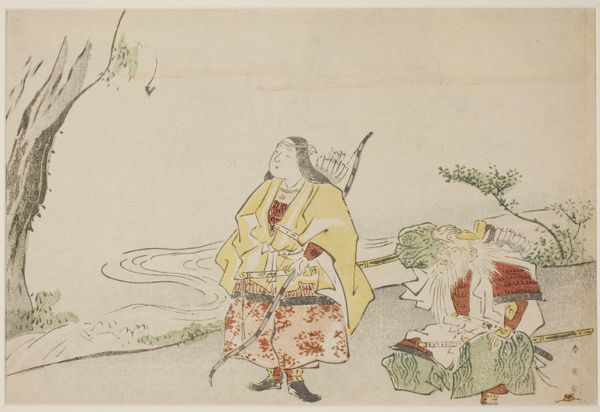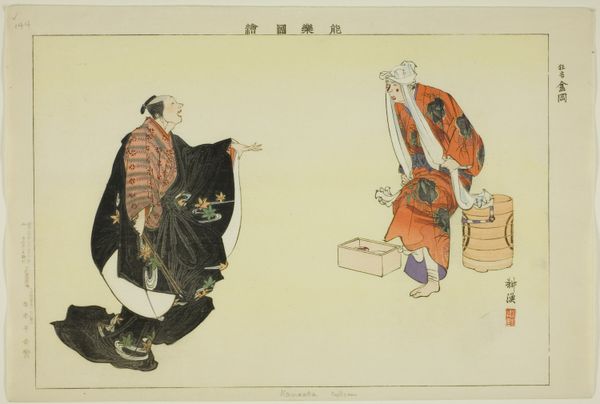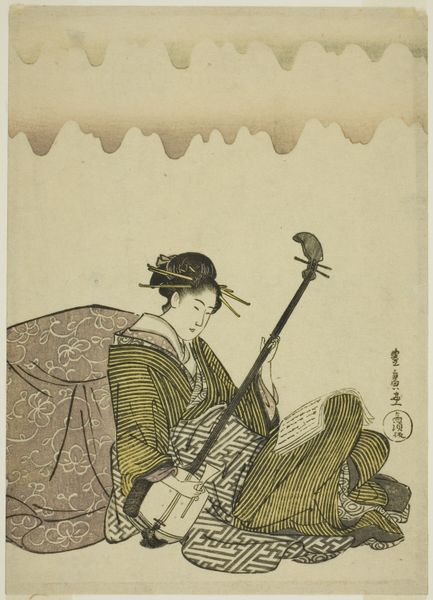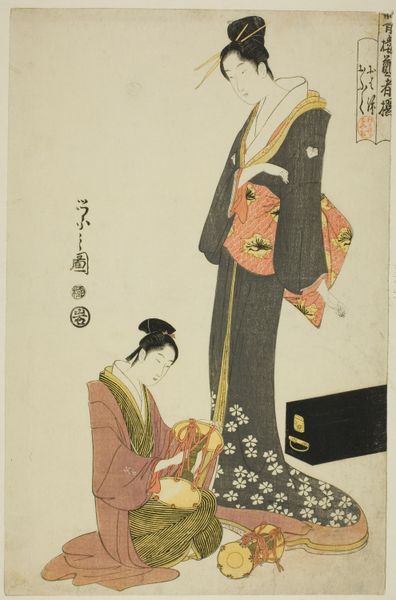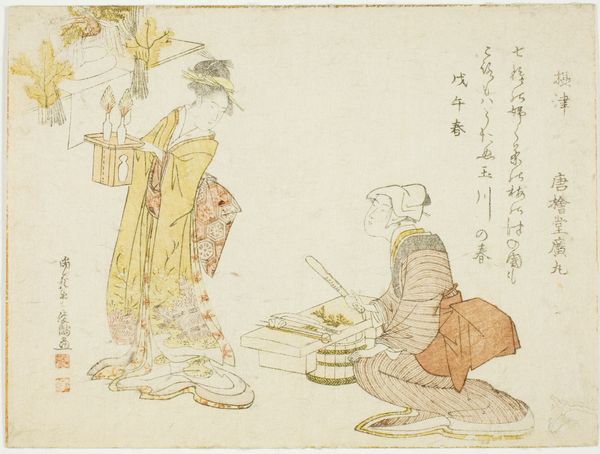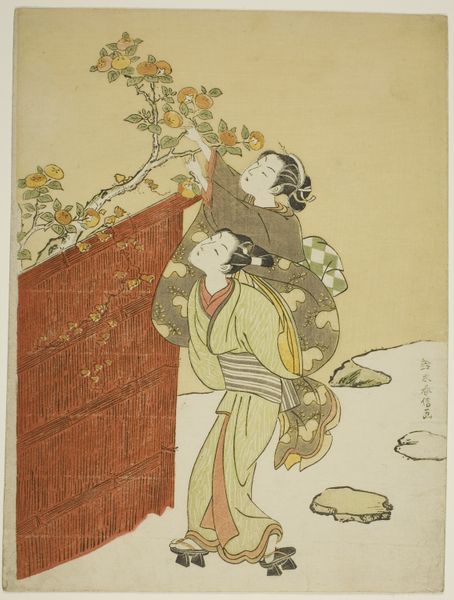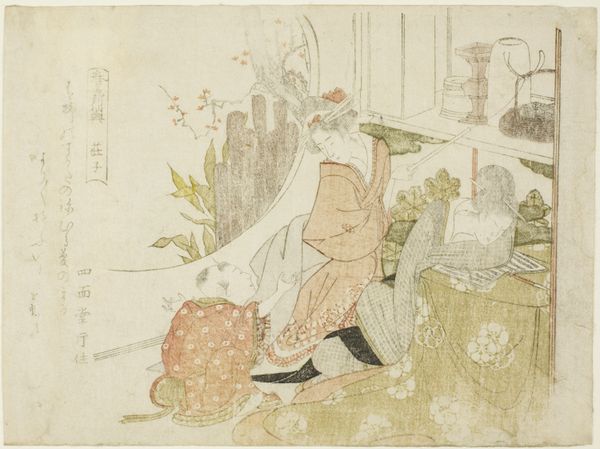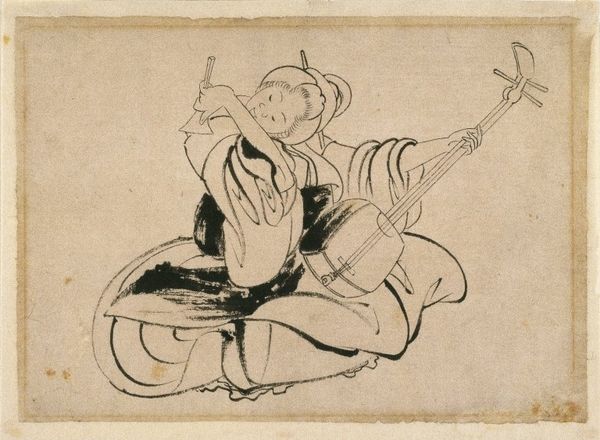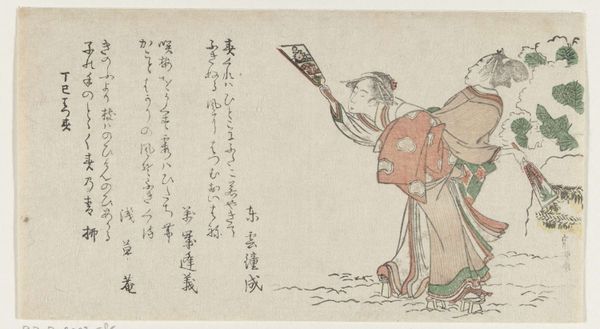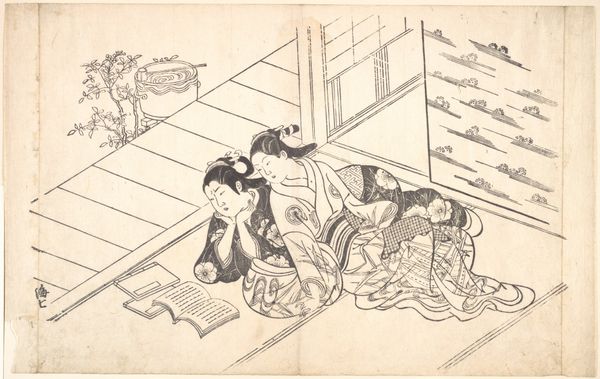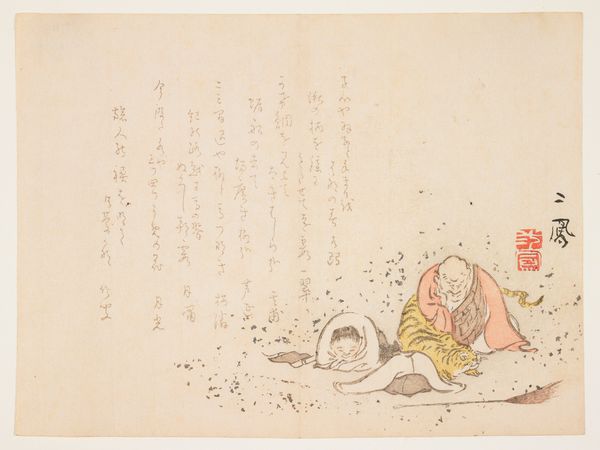
drawing, print, ink
#
drawing
# print
#
asian-art
#
ukiyo-e
#
figuration
#
ink
#
genre-painting
Dimensions: Image: 7 1/8 × 9 1/2 in. (18.1 × 24.1 cm) Mat: 15 1/4 × 22 3/4 in. (38.7 × 57.8 cm)
Copyright: Public Domain
Curator: Let's consider this print called "Uba," by Shibata Zeshin, likely created between 1850 and 1870. It's currently housed here at the Met. Editor: It's… unexpected. The overall impression is quite somber. The figure, seemingly mid-motion, the limited palette - it lends the work a certain… seriousness? Curator: Precisely! Uba, in Japanese folklore, represents an aged mountain witch or midwife figure. The contrast here between the witch, associated often with malevolence or social ostracization due to aging, and this somewhat benevolent or at least neutral interaction with animal life is quite intriguing. We must remember that in Ukiyo-e prints, often social commentaries are subtly woven through representations of archetypal figures. Editor: The composition itself is arresting. Note the stark simplicity of the lines, particularly in the figure’s robe and hair, against the very delicate depiction of the flying turtle’s wings. Zeshin’s use of line and shading really drives home that contrast of movement. The stillness of the woman versus the implied rapid motion. Is it possible she's empowering this traditionally earth-bound creature? Curator: I believe that's a powerful interpretation. Given Zeshin’s mastery of various artistic styles, this "Uba" challenges viewers to reconsider stereotypes. The turtle, now seemingly liberated through some mysterious act, could symbolize empowerment, defying imposed limitations related to her advanced age and the misogynistic position as a witch figure. This interaction can be linked to examining ageism and roles imposed upon marginalized women. Editor: And look at the hands. Delicately rendered, conveying intention…a soft control. Not forceful or cruel. Curator: The bamboo pipe also tells a tale. Does it represent sorcery? Or a calming, habitual object indicating quiet reflection despite living in a state of assumed exile? Editor: The limited colour palette—the subdued ink tones punctuated only by hints of red from the artist's seal—amplifies that feeling of introspection. Curator: Indeed. These Ukiyo-e prints were consumed by a burgeoning middle class. Zeshin often explored such social themes. By bringing in symbols connected with myth and superstition, it seems Zeshin made the print more about a modern exploration of imposed gender expectations in light of tradition. Editor: For me, focusing on Zeshin’s visual choices enhances my appreciation for the piece and highlights that the simple use of line can speak volumes.
Comments
No comments
Be the first to comment and join the conversation on the ultimate creative platform.
